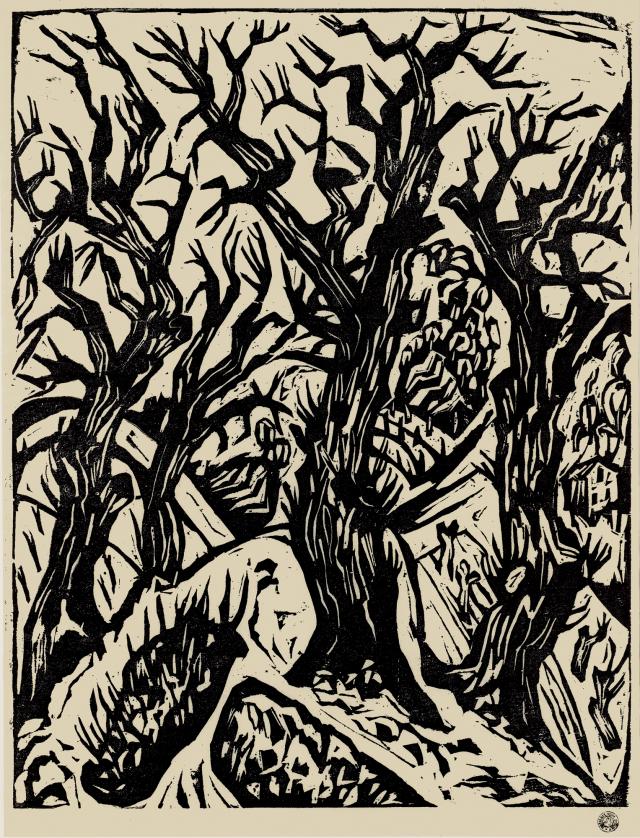This print is clearly in the tradition of expressionist woodcuts that are free of all academic conventions. It depicts a forest in deconstructed perspective. The unpolished look of its lines, the result of working the wood with a burin, lets the raw quality of the support show through in the print.
The search for a primitive quality is rooted in handicrafts and the handmade, which appealed to the Basel expressionists of the group Rot-Blau. In the work of these artists, their interest in a vernacular art and their use of a technique that goes against the technical progress of the time are part and parcel of a desire to distance themselves from bourgeois art, which is seen as being slick and conventional. It is born of the wish to reconnect with practices that are more authentic, less sophisticated, and shorn of any education in culture.
Hermann Scherer’s Kastanienbaüme (Chestnut Trees) shows us the wild aspect of nature in its most immediate expression. A frame recalls, in the narrow sense of the term, the limits of the sheet. The viewer can make out a house sketchily drawn on the margins of the composition. Further on, the undergrowth is likened to a bunch of grapes and, next to that, a few simple strokes suggest a vineyard. In this landscape of bare trees, branches form geometrical motifs above and tower over pointy hills. As Ernst Ludwig Kirchner put it, “Nowhere else do we learn to better understand an artist than in his print work.”
The search for a primitive quality is rooted in handicrafts and the handmade, which appealed to the Basel expressionists of the group Rot-Blau. In the work of these artists, their interest in a vernacular art and their use of a technique that goes against the technical progress of the time are part and parcel of a desire to distance themselves from bourgeois art, which is seen as being slick and conventional. It is born of the wish to reconnect with practices that are more authentic, less sophisticated, and shorn of any education in culture.
Hermann Scherer’s Kastanienbaüme (Chestnut Trees) shows us the wild aspect of nature in its most immediate expression. A frame recalls, in the narrow sense of the term, the limits of the sheet. The viewer can make out a house sketchily drawn on the margins of the composition. Further on, the undergrowth is likened to a bunch of grapes and, next to that, a few simple strokes suggest a vineyard. In this landscape of bare trees, branches form geometrical motifs above and tower over pointy hills. As Ernst Ludwig Kirchner put it, “Nowhere else do we learn to better understand an artist than in his print work.”
